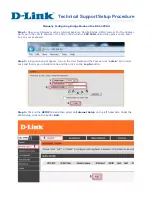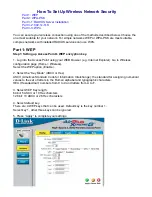
Each tab appears in a compressed view by default. The number of networks, IAPs, or clients in the network
precedes the coresponding tab names. The individual tabs can be expanded or collapsed by clicking the tabs.
The list items in each tab can be sorted by clicking the triangle icon next to the heading labels.
Network Tab
This tab displays a list of Wi-Fi networks that are configured in the Instant network. The network names are
displayed as links. The expanded view displays the following information about each WLAN SSID:
l
Name
—Name of the network.
l
Clients
—Number of clients that are connected to the network.
l
Type
—Type of network such as Employee, Guest, or Voice.
l
Band
—Band in which the network is broadcast: 2.4 GHz band, 5 GHz band, or both.
l
Authentication Method
—Authentication method required to connect to the network.
l
Key Management
—Authentication key type.
l
IP Assignment
—Source of IP address for the client.
l
Zone
—IAP zone configured on the SSID.
To add a wireless network profile, click the
New
link on the
Network
tab. To edit, click the
edit
link that is
displayed on clicking the network name in the
Network
tab. To delete a network, click the
x
link.
For more information on the procedure to add or modify a wireless network, see
.
Access Points Tab
If the Auto-Join Mode feature is enabled, a list of enabled and active IAPs in the Instant network is displayed on
the
Access Points
tab. The IAP names are displayed as links. If the Auto Join Mode feature is disabled, the
New
link is displayed. Click this link to add a new IAP to the network. If an IAP is configured and not active, its
MAC Address is displayed in red.
The expanded view of the
Access Points
tab displays the following information about each IAP:
l
Name
—Name of the IAP. If the IAP functions as a master IAP in the network, the asterisk sign "*" is
displayed next to the IAP.
l
IP Address
—IP address of the IAP.
l
Mode
—Mode of the IAP.
n
Access
—In this mode, the IAP serves clients and scans the home channel for spectrum analysis while
monitoring channels for rogue IAPs in the background.
n
Monitor
—In this mode, the IAP acts as a dedicated Air Monitor (AM), scanning all channels for rogue
IAPs and clients.
l
Spectrum
—When enabled, the IAP functions as a dedicated full-spectrum RF monitor, scanning all
channels to detect interference from neighboring IAPs or non-Wi-Fi devices such as microwaves and
cordless phones. When Spectrum is enabled, the IAP does not provide access services to clients.
l
Clients
—Number of clients that are currently associated to the IAP.
l
Type
—Model number of the IAP.
l
Mesh Role
—Role of the IAP as a mesh portal or mesh point.
l
Zone
—IAP zone.
l
Serial number
—Serial number of the device.
l
Channel
—Channel on which the IAP is currently broadcast.
l
Power (dB)
—Maximum transmission Effective Isotropic Radiated Power (EIRP) of the radio.
l
Utilization (%)
—Percentage of time that the channel is utilized.
Aruba Instant 6.5.0.0-4.3.0.0 | User Guide
Instant User Interface |
33
















































